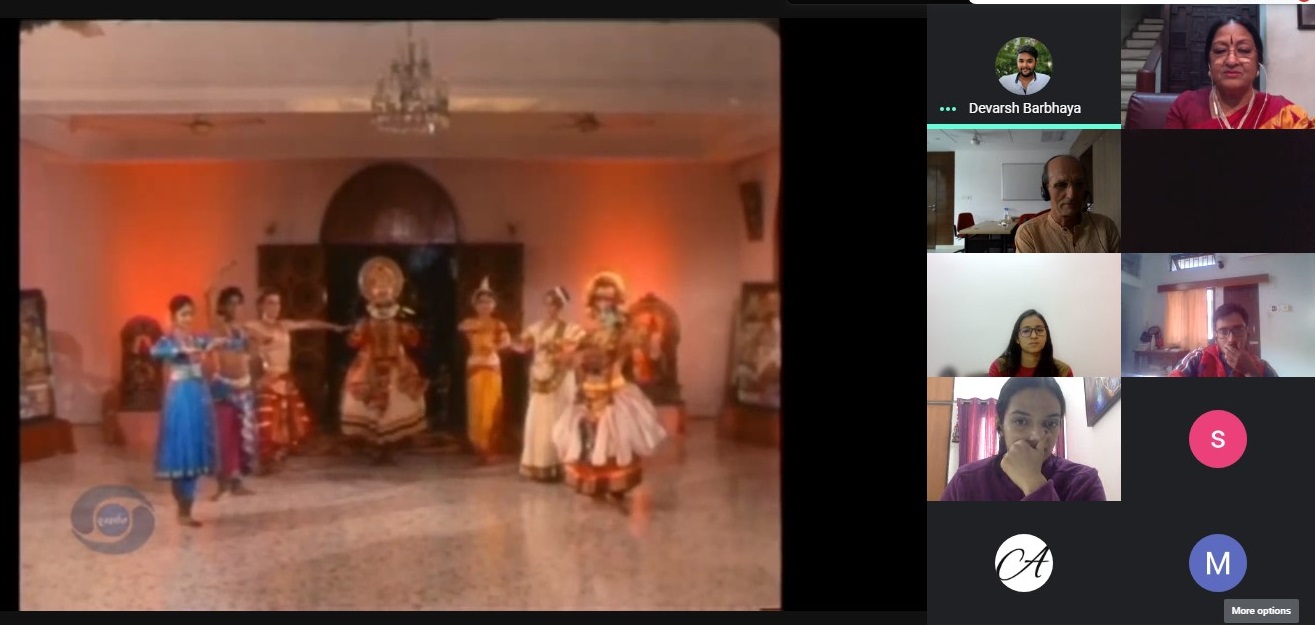Dr Padma Subrahmanyam’s sessions on Natyashastra, and the concepts of Marga and Deshi forms of performing arts
Indian Knowledge Systems 2021: The Web of Arts and Aesthetics
Lecture brief: Dr. Padma Subrahmanyam
Session 1 (10th February, 2021)
Marga: The Unacknowledged Substratum of Performing Arts
In a riveting discourse on the marga tradition in the Performing Arts, Dr. Subrahmanyam introduced the audience to the essential distinction between the ‘classical’ and the marga. She explained how the two were not to be confused. What we encounter today as ‘classical’ artistic forms are actually deshi variations, adaptations and derivations of the marga. In her own endeavours at Nrithyodaya, she attempts to bring Natyashastra (marga) to life and recreate its style and tenets through Bharatnrityam. She also informed that the terms Marga and Deshi are not mentioned in the Natyashastra text. They were coined after Bharatmuni’s era to differentiate between the old and new forms of performing arts. She also explained various research-based theories that indicate that the author of Natyashastra was the contemporary of Rishi Valmiki, the author of Ramayana. One such reference comes from the fact that the entire text of Natyashastra mentions many deities, but there is not a single mention of Lord Rama, which leads to the belief that Bharatmuni must be a contemporary of Valmiki. It is very likely that Rishi Valmiki adopted the Rasa theory for Ramayana from Bharatmuni’s Natyashastra. She went on to explain the meaning behind each of the nine Rasas mentioned in the Natyashastra.
Dr. Subrahmanyam has a very clear stance on research in Art and Aesthetics–it has to be put to practice. According to her, a text like the Natyashastra must not be “read” as a piece of literature, but “performed” as art to fully understand the depth of its meaning. In traversing the realms of theory and practice, Dr. Subrahmanyam guides us towards academic pursuit of the Arts that is truly an example of embodied knowledge. Dr. Subrahmanyam concluded on a rather wistful note that classical artists today had much to learn from the marga, if only they understood that it would enhance their deshi and not bind it in strict and elitist convention, as is popularly believed.
Session 2 (11th February, 2021)
Deshis embedded in Marga
In her second lecture of the series, Dr. Subrahmanyam discussed the crucial aspect of identifying how the marga can be put to practice. She explained how elements of marga were enmeshed in deshi practice. Dr. Subrahmanyam illustrated a bright tapestry of geographically demarcated styles described in the Natyashastra directly corresponding to their regional expressions today. As she succinctly put it, “All forms of art, drama, dance and music in India are children of the Natyashastra”. The tragedy of it all was that these connections appeared to be so unconscious that they would go absolutely unacknowledged. Dr. Subrahmanyam’s key observation remained the need to see the intermingling of the marga and deshi as evidence of a unity in “variety” and not “diversity”. In addressing the contentious relationship between mythology and history, Dr. Subrahmanyam asserted that mythology was not to be dismissed as frivolous but was to be treated as “sugar-coated history” and has its own place in the study of art and aesthetics. Dr. Subrahmanyam concluded her lecture with a simple question with profound consequences, “If there was no cultural unity in ancient India, why would Bharatamuni go to such lengths to document so many communities and their art?”

